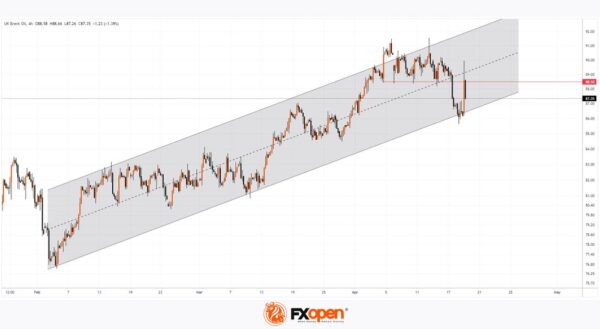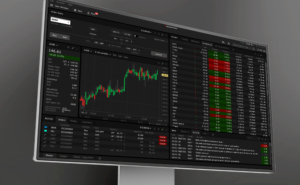On the night of Thursday into Friday, reports emerged that Israel had attacked Iran following Iran’s attack on Israel over the weekend.
Let’s remember that we wrote on Monday that after a 300 drone and missile attack on Israel over the weekend, the price of Brent oil did not rise. Perhaps this happened because Iran’s attack was then expected after the attack on its diplomatic mission, and warnings were published in the media.
And the initial reaction of financial markets to the escalation tonight looked more dramatic – there was a jump in prices for protective assets:
→ gold rose in price to USD 2,410 and above;
→ the Swiss franc and the Japanese yen have risen in price;
→ oil and US Treasury bonds rose in price.
There was also a sale of risky assets — Bitcoin, for example, fell below the USD 60k level. Moh Siong Sim, currency strategist at the Bank of Singapore, told Reuters: “It’s pretty obvious the market is nervous. I think markets are at this stage in a flight-to-safety mode.”
As the morning approached, new information began to appear in Europe:
→ An Iranian official told Reuters that there was no missile attack;
→ CNN writes that Iranian air defenses intercepted three drones, and the United States did not approve of the Israeli attack;
→ According to the IAEA, there was no damage to Iran’s nuclear facilities after the Israeli strike.
→ According to ABC News, air traffic has resumed in Iran.
As a result, prices moved towards the closing levels of yesterday’s trading — V-like patterns formed on the charts of the mentioned instruments.
The oil market can be considered the most susceptible to the influence of nightly news, since Iran is one of the top 10 countries in oil production.

Technical analysis of the Brent oil chart shows that:
→ the price rebounded from the level of the lower border of the ascending black channel (as we wrote yesterday);
→ however, supply forces intensified and returned the price closer to the lower border;
→ at the same time, a bearish inverted V pattern has formed on the Brent price chart today, and the median line of the channel shows signs of resistance;
→ it is also acceptable to expect that the former support at USD 88.50 will provide resistance when the price attempts to rise.
If a further round of escalation between Iran and Israel does not occur, it is possible that the Brent price will break down the current black ascending channel. And this may be welcomed by the US administration, where presidential elections are getting closer and closer.









